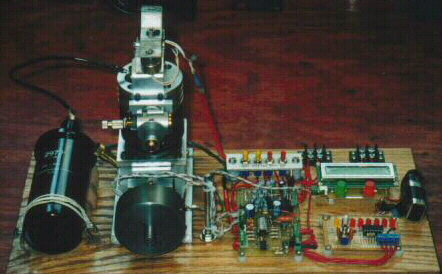
EVIC
Update #15, October 6, 2002Walt Hiester's EVIC
In update #14 I promised a picture of Walt Hiester's EVIC engine. Here are 3 photos to show his engine the changes he made.

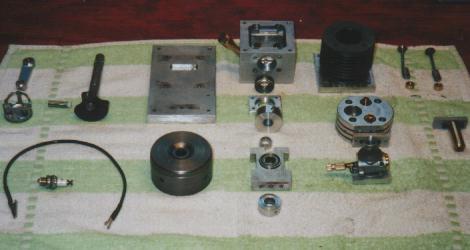
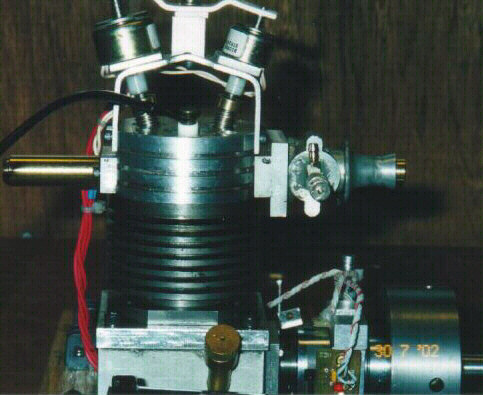
Improved Performance
In Update #14 I showed you a picture of my 2nd EVIC pushing a radio controlled 52" deep V model boat. Performance wasn't great. Week by week, for the past 3 months, performance has gradually improved. The head is now water cooled. A Mikuni fuel pump from a snowmobile, driven by crankcase pressure pulses, pumps cooling water through the head and muffler coupler.
The compression ratio has been increased from 8.5:1 to 10.5:1. This created the biggest increase in performance. My investigation of compression ratios indicates that 12:1 or even 14:1 is "practical" for small engines like the EVIC. Many of the 2 stroke engines being used in model boats run on regular 87 octane gas with compression ratios over 12:1.
The control voltage went from 24 to 28.8 volts (24 AA NiCads). Two DC-DC converters were added to the control electronics. One replaces all the load resistors I was using to drop the voltage down to the solenoid holding voltage. The other generates 5 volts for the micro and the radio control system. Now there is virtually no heat generated by this experimental control electronics board. The intake valve solenoid grew to be the same size as the exhaust one. The valve lifts were increased to 0.045" (intake) and 0.035" (exhaust) and the valve springs got stronger. The crankcase volume was increased to try to keep the oil in. The connecting rod / crank pin bearing is now a needle bearing running on a hardened steel pin.
All of these changes got the unloaded top speed up to 12,600 RPM and the working speed to about 8,500 RPM while driving an Octura X462 propeller. As this picture taken on September 7th illustrates performance is much improved.
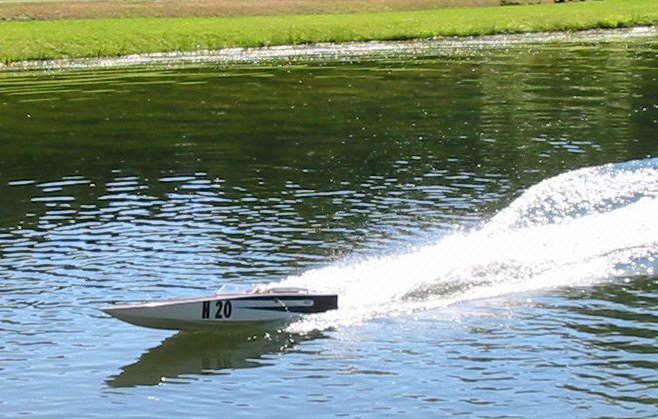
Pushing for performance always brings some problems. I burned out the small intake solenoid with the higher control voltage. The bronze rod/crank pin bearing seized when the oil level got low. The 6061T6 piston seized twice. A friend has contributed a piece of 4032T651 (12% silicon) aluminum that should solve this thermal expansion problem.
I continue to have problems with the oil coming out through the sealed ball bearing at the front of the crankcase. Anyone know how to solve this problem? Is there any type of 3/8" diameter seal I can use?
When I increased the valve lifts the solenoid armatures were overshooting enough on valve closing that, on their return, they reopened the valves. I solved this problem with electrical damping on the intake side. The extra energy from the damping pulse contributed to the intake solenoid failure. The larger solenoid "tolerates" the damping pulse but gets hot. On the exhaust side I was turning the damping off above 6000 RPM because the overshoot ended at just the right time to help open the exhaust valve the next time around. Without the overshoot the engine wouldn't rev up under load. This told me I was at the limit of the exhaust solenoid's capability. I tried higher lifts without success. Even with the 28.8 volts I couldn't get the exhaust valve to open reliably with a lift above 0.035" and the solenoid was getting so hot that I feared another failure. Fortunately the solenoid survived the summer!
I knew that better performance would require more exhaust valve lift. I knew that relying on solenoid armature overshoot to help open the exhaust valve was optimum at only one speed. I also knew that I would have to get the solenoid temperatures down for long term reliability. One option was a bigger more powerful exhaust valve solenoid. After looking at what was available and musing over the fact that solenoid force decreases with stroke length (valve lift) and response time generally increases with solenoid size I decided to try 2 solenoids. The new solenoid would be set for a short 0.015" stroke so that it would generate as much force as possible to get the valve open. The other solenoid would then push the valve the rest of the way open. On October 4th I tested this configuration for the first time. It worked very well. The exhaust valve lift was still set to 0.035". I was able to drop the control voltage back down to 24 volts which means all the solenoids are running cooler. The exhaust valve is opening quickly but taking slightly longer to close. This limited the top speed to just over 10,300 RPM. The next day I increased the exhaust valve lift to 0.043" and got the top speed up to the 12,755 RPM. See photo below which shows how I used an aluminum sleeve, which doubles as a heat sink, to mount the 2nd solenoid above the first. I haven't tried this configuration in the boat yet.
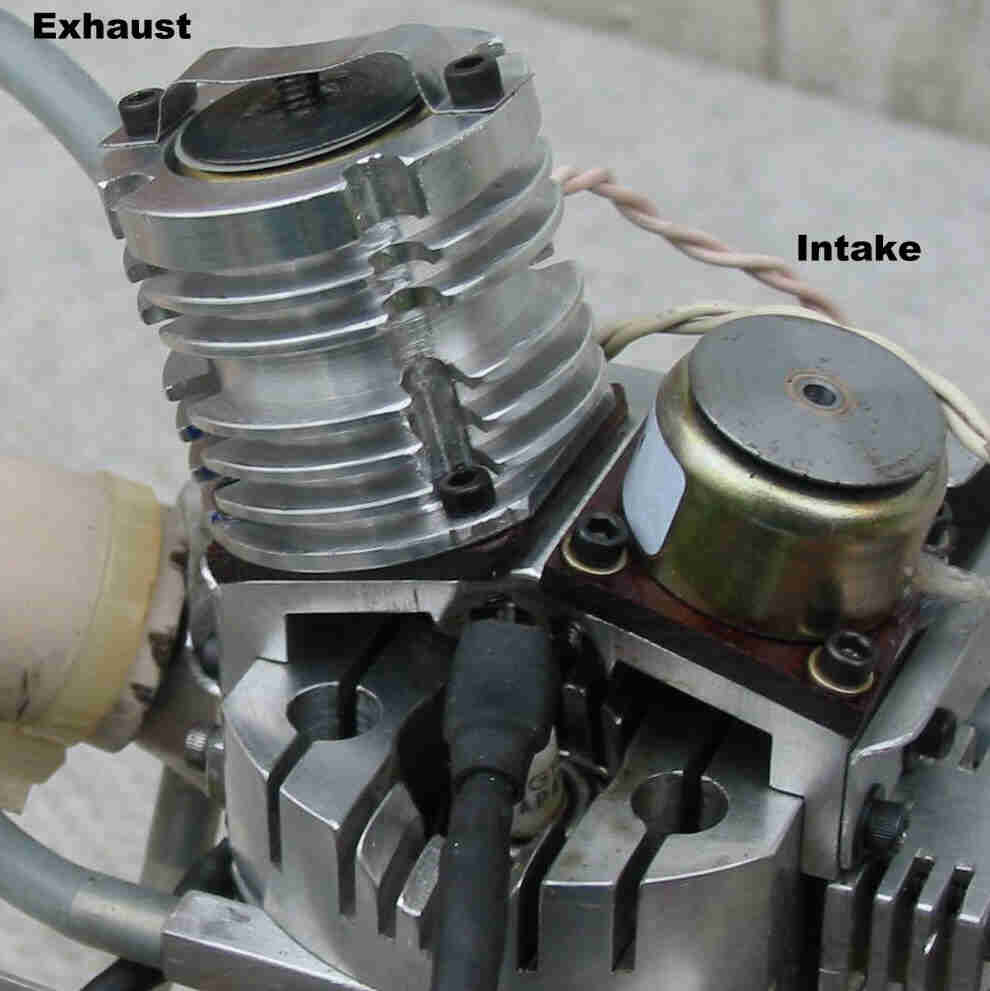
I am working on a new control board that incorporates all the changes I tested over the summer plus a more powerful PIC16F628 micro. Watch this web site for details on availability.
There will be an article on my EVIC engines in the next issue of Model Engine World. For information on this UK magazine see http://www.engineworld.info
I am working on plans for an EVIC twin. More on this in Update #16.
Dave Bowes